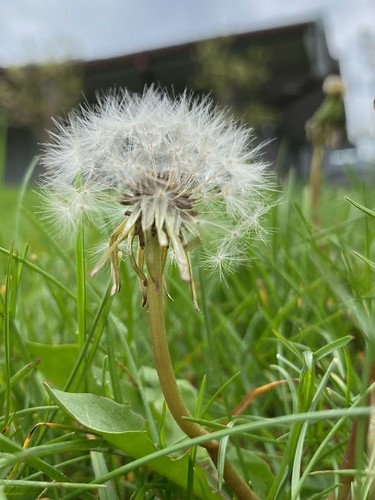By Chelsea Jandreau, Nature Educator
Spring is often associated with colorful bursts of flowers, but the appearance of many flowers tends to come in rounds and waves from the first warm days of March through the fall flowers of September. Their first appearance and their bright colors signal a shift in the weather, making them a perfect mascot for spring. At this point, we are well into spring and the first flowers have already faded and made way for the next round of late spring and early summer flowers. Some of those flowers will only make an appearance once and then disappear until next year, while others will continue to pop up all summer long.
Often, some of the first sightings are the planted bulbs of daffodils and crocuses popping up despite the rapid shift between sun and snow. Over the next month, violets and cuckoo flowers appear, the apple trees blossom, and in an explosion of yellow, the dandelions take over open areas.

Dandelions will begin to pop up whenever it happens to get warm enough. They tend to come out in full force sometime in April, but I have spotted them as early as February, especially with the recently warmer winters.
Now, this is a potentially controversial statement depending on how you view your space, but I actually really enjoy dandelions. They make me happy. There are a few reasons for this. First of all, yellow happens to be my favorite color. There is a larger backstory that contributes to this, but the overall theme is that yellow is such a happy, bright, hopeful color.
Secondly, when the dandelions start covering the fields, yards, and roadsides, it is a sure sign that the weather is changing and we are in my late spring ideal where the temperatures hover around 60 degrees F, and the humidity ramps up just enough to be more comfortable than the intense winter dryness, but not too much to be stifling. This time is my own personal goldilocks of weather.
I am very aware that not everyone shares this opinion. Dandelions are often considered a weed and a persistent nuisance. There are many people engaging in an ongoing battle to eradicate them from their sidewalks and lawns every summer. Perhaps this is because it is never just a couple of dandelions, and instead there seems to be a steady increase in their presence over time. Maybe some people simply don’t like how they look. For others, the dandelion is just not what they picture in either their own or a greater cultural perception of a “perfect” lawn.
It is not necessarily the dandelion’s fault that there happens to be hundreds of them everywhere. These persistent flowers have adaptations that allow them to thrive and remain abundant in spaces that many people are trying to cultivate for human use. Think about where you see dandelions the most. Roadsides, lawns, and parks, especially those that are mowed regularly, are usually hotspots. Dandelions are big fans of sunlight, so open areas where the taller grass and flower species are being cut on a weekly basis are ideal locations. Lawns that are mown often usually have an abundance of dandelions with short stalks, whereas spaces mown less or on a taller setting can have much taller stems.

In addition to being given some pretty ideal spaces through human lawn cultivation, they are also exceptionally hardy little plants. They have a strong taproot, which means they have a long, primary root that stretches down into the ground. The dandelion taproot can grow up to 6 to 12 inches deep, giving them a strong base to grow from and making them difficult to pull up. The leaves grow in a rosette close to the ground, so even when the dandelions do get mowed, it is mostly their stems and flowers that take the brunt of the impact. The leaves and root are unaffected, which means the plant still has everything it needs to get enough energy to regrow that flower.
Dandelions are not an invasive plant in ecological terms. They are, however, categorized as weeds. Weeds are an interesting category of plants because there is not a specific implication of whether or not the plant is useful for wildlife or people. It is simply defined as a plant growing somewhere it is not wanted, usually in spaces cultivated for humans. But a dandelion is still a flower. Pollinators, including several types of bees, use them for food. Every part of the plant is edible by humans. And in the end, you even get a wish as the flower petals give way to a ball of fluffy, floating seeds.
Audubon Community Nature Center builds and nurtures connections between people and nature. ACNC is located just east of Route 62 between Warren and Jamestown. The trails are open from dawn to dusk and birds of prey can be viewed anytime the trails are open. The Nature Center is open from 10 a.m. until 4:30 p.m. daily except Sunday when it opens at 1 p.m. More information can be found online at auduboncnc.org or by calling (716) 569-2345.


Recent Comments